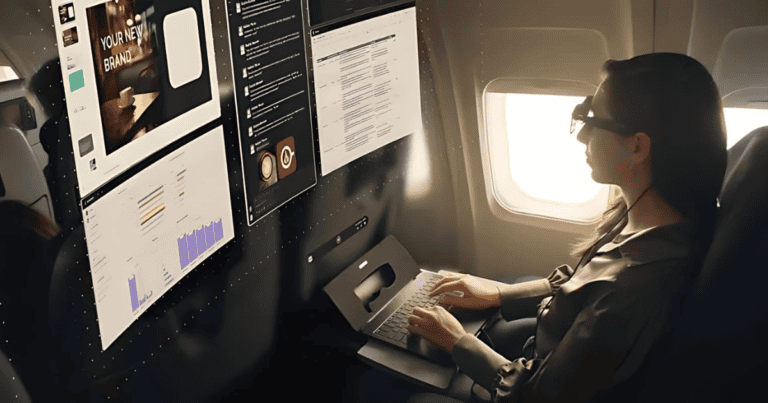In the field of AI technology, the accurate labeling of authentic photos versus AI-generated ones holds significant importance, especially for artists and photographers seeking recognition for their work. Meta’s recent adjustments to its AI labeling system following the misidentification of authentic photos have sparked discussions on the impact of such errors on the credibility and authenticity of creative content. As Meta works to refine its labeling methods and enhance transparency, questions arise about the broader implications of AI technologies in the domain of visual arts and the evolving relationship between human creativity and machine-generated content.
Meta’s AI Labeling Challenges
Struggling with misidentifying real photos as AI-generated, Meta has encountered significant challenges in refining its AI labeling systems to precisely categorize content.
The inaccuracies in Meta’s labeling approach have sparked criticism and confusion among users, content creators, photographers like Pete Souza, and artists. Mislabeling real photos as made with AI has not only frustrated individuals but also raised concerns about the precision of Meta’s AI detection system.
This issue not only impacts the credibility of artists’ work but also poses questions about the effectiveness of labeling AI-generated content.
In response to the backlash, Meta is evaluating its labeling approach to guarantee that AI-generated content is accurately identified. The company’s commitment to addressing these challenges reflects the importance of maintaining trust in AI technologies, particularly in content moderation and digital policy.
Enhancing the precision of AI labeling systems is essential for combating misinformation and manipulated content online, underscoring the significance of Meta’s efforts to refine its AI technology.
Impact on Photographers
Photographers have expressed concerns over Meta’s labeling system mistakenly categorizing their authentic photographs as AI-generated, impacting the credibility of their work on social media platforms.
The mislabeling of real photos by Meta’s AI has caused distress among photographers, who depend on accurate representation of their craftsmanship. This issue becomes particularly problematic when photographers’ genuine creations are flagged with an ‘AI-generated’ label, potentially undermining their reputation and leading to confusion among viewers.
The inadvertent misclassification of real photos as AI-generated content raises questions about the reliability and precision of Meta’s labeling system, highlighting the need for improved algorithms that can differentiate between genuine photography and AI-generated imagery.
As photographers work diligently to showcase their talent and build a following on social media, the accurate labeling of their work becomes paramount in maintaining trust and authenticity in the digital sphere.
Meta’s Response to Criticism
In response to the backlash over mislabeling real photos as AI-generated, Meta has taken steps to address the issue by updating its labeling system. The company faced criticism for incorrectly identifying images, leading to frustration among users and photographers. Meta’s new labeling approach aims to rectify these errors and enhance accuracy in image classification.
A meta spokesperson told:
- Meta is adjusting its labeling approach to prevent mislabeling real photos as AI-generated.
- The updated system will better reflect the amount of AI used in generating or editing images.
- Meta acknowledged the need to align the labeling system with user expectations.
- The company emphasized the importance of transparency in disclosing the involvement of AI tools in image creation and editing processes.
Mislabeling Real Photos
Amid mounting concerns and criticism, Meta’s AI detection system has been mislabeling genuine photos as AI-generated, leading to exasperation among users and photographers alike.
The misidentification of authentic photos as AI-generated visuals has caused significant uproar, with instances like Pete Souza’s historic photo from the 1984 NBA Finals being inaccurately tagged. This mislabeling not only undermines the credibility of the content but also impacts the reputation of photographers and artists whose work is being misrepresented.
To address these issues, Meta is reevaluating its labeling approach to ensure a more precise identification of AI-generated content. The confusion is further compounded by the absence of the AI label on the web version of the platform, exacerbating user frustration.
Artists, photographers, and content creators, including cosplay artists and digital artists, have voiced their displeasure at the misclassification of their human-made or minimally edited work by Meta’s AI detection system.
The Role of Adobe’s Tools
Adobe’s advanced tools, particularly Generative Fill, have come under scrutiny for potentially triggering mislabeling issues in Meta’s AI system for real photos. The utilization of Adobe tools in image editing platforms like Instagram has raised concerns about the accuracy of Meta’s labeling approach when distinguishing between real and AI-generated content.
Key points to contemplate regarding the role of Adobe’s tools in Meta’s labeling inconsistencies include:
- Generative Fill’s impact on Meta’s AI system for identifying real photos.
- The mislabeling of real photos as AI-generated due to Adobe tools.
- Questions arising about the precision of Meta’s AI detection system influenced by Adobe tools.
- Concerns regarding the accuracy of Meta’s labeling process when authentic photos are mistakenly tagged as AI-generated.
The integration of Adobe’s tools in digital content creation platforms has inadvertently contributed to the challenges faced by Meta in accurately classifying real photos, emphasizing the need for refined AI algorithms and improved labeling mechanisms to enhance the detection of manipulated content.
Understanding ‘Made by AI’ Label
The implementation of Meta’s ‘Made by AI’ label aimed to provide transparency regarding the use of AI tools in content creation on Facebook and Instagram. This labeling approach was introduced to flag AI-generated content and inform users about the involvement of AI tools in creating images.
By tapping on the label, users could access details about the specific AI tools used in the image’s creation process. However, photographers soon noticed inaccuracies in the system, as even minor edits triggered the ‘Made by AI’ badge, leading to confusion among users.
The labeling approach did not align with its intended purpose, prompting Meta to reconsider and update the labeling system to guarantee more accurate identification of content genuinely created with AI tools. This adjustment reflects the company’s commitment to refining AI labeling practices for improved transparency and clarity in distinguishing AI-generated content on its platforms.
Addressing Backlash From Photographers
Meta promptly responded to the backlash from photographers regarding the mislabeling of real photos as AI-generated, recognizing the need for adjustments to address the concerns raised. Photographers raised valid points about incorrectly tagging images, prompting Meta to take action.
In response to the feedback, Meta announced the following measures:
- Reassessing the criteria used to label images accurately.
- Implementing improved algorithms to prevent future mislabeling incidents.
- Collaborating with photographers to gather insights and enhance the labeling process.
- Conducting thorough testing to secure the effectiveness of the updated AI labeling system.
These steps aim to rectify the inaccuracies in Meta’s AI labeling system and rebuild trust with photographers and users.
Final Thoughts
Despite Meta’s efforts to improve its AI labeling system, the ongoing misidentifications of real photos as AI-generated continue to plague photographers and undermine the credibility of their work.
The irony lies in the fact that while technology aims to enhance accuracy, it has instead created confusion and mistrust.
It remains to be seen whether Meta can restore faith in the authenticity of photographers’ creations through its labeling updates.






